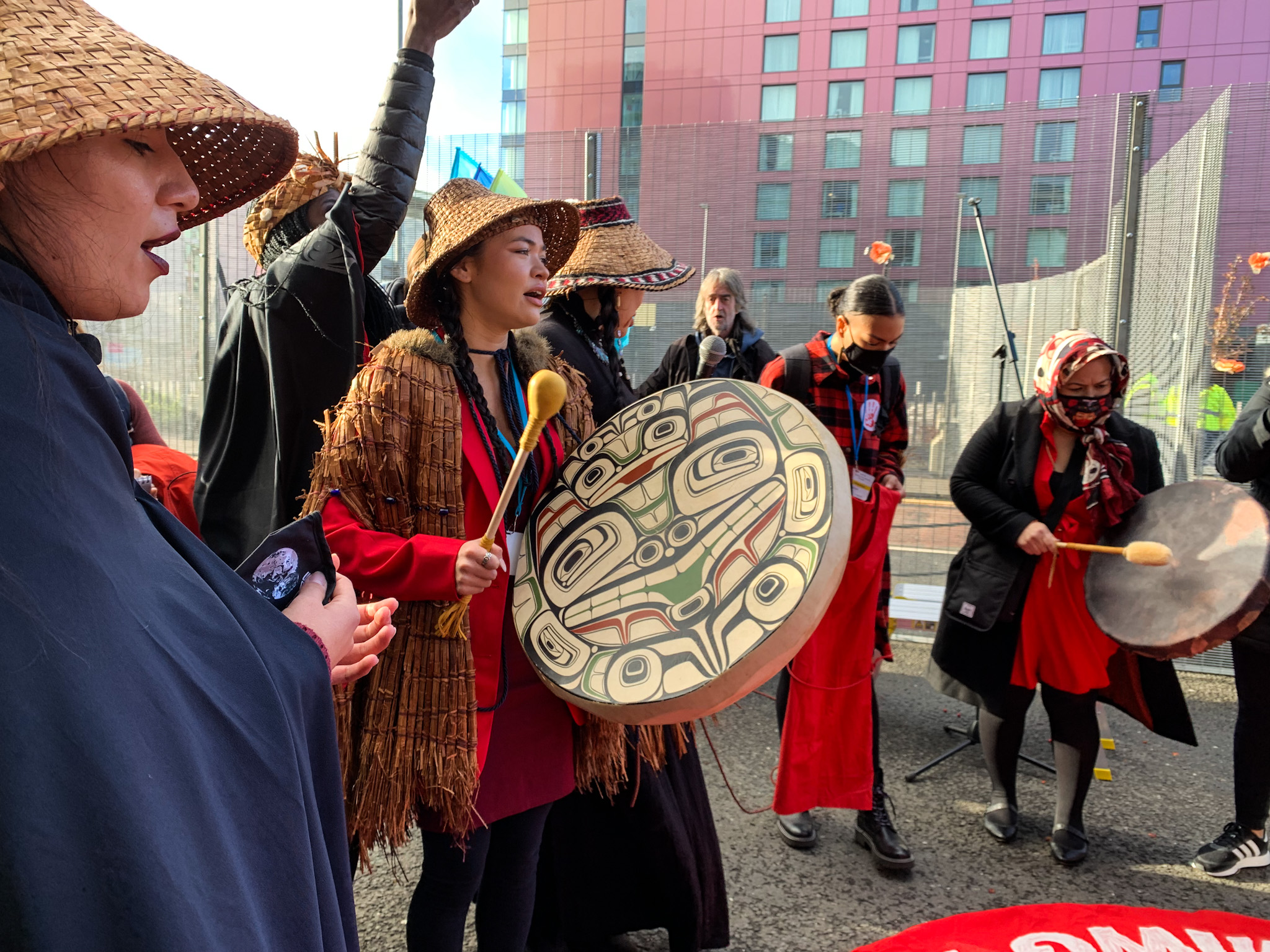
- Details
- By Leala Pourier
At the 26th annual United Nations Climate Conference (COP26) held in Glasgow, Scotland, 197 nations and territories are meeting to discuss and implement solutions to climate change. Outside the formal meetings, activists connected environmental issues to the issue of missing and murdered Indigenous women, girls, and two spirit individuals.
[Special to Native News Online, Leala Pourier is providing on-the-ground coverage of COP26 from Glasgow.]
COP26 is split into two sectors: The Blue Zone and the Green Zone. The Blue Zone is only accessible to political officials and accredited individuals or organizations and is held at the Scottish Event Center (SEC). This is where the large discussions and negotiations regarding climate change take place. The Green Zone is where other organizations and individuals can showcase the work they have done and plan to do, without being a part of any major decision making.
On November 9th, a group of Indigenous peoples led a demonstration inside the Blue Zone, the most exclusive part of COP26, that continued as a rally just outside the barricade into the SEC. Together, they walked out of the SEC singing and drumming in solidarity and remembrance of all missing and murdered Indigenous women, girls, and two spirit individuals (MMIWG2S). These specific groups of people are often targeted for violence, especially near rural places of resource extraction, such as oil fields and mining camps. At the rally, Indigenous women marched and delivered speeches detailing these tragedies and emphasising the importance of acting to stop the violence.
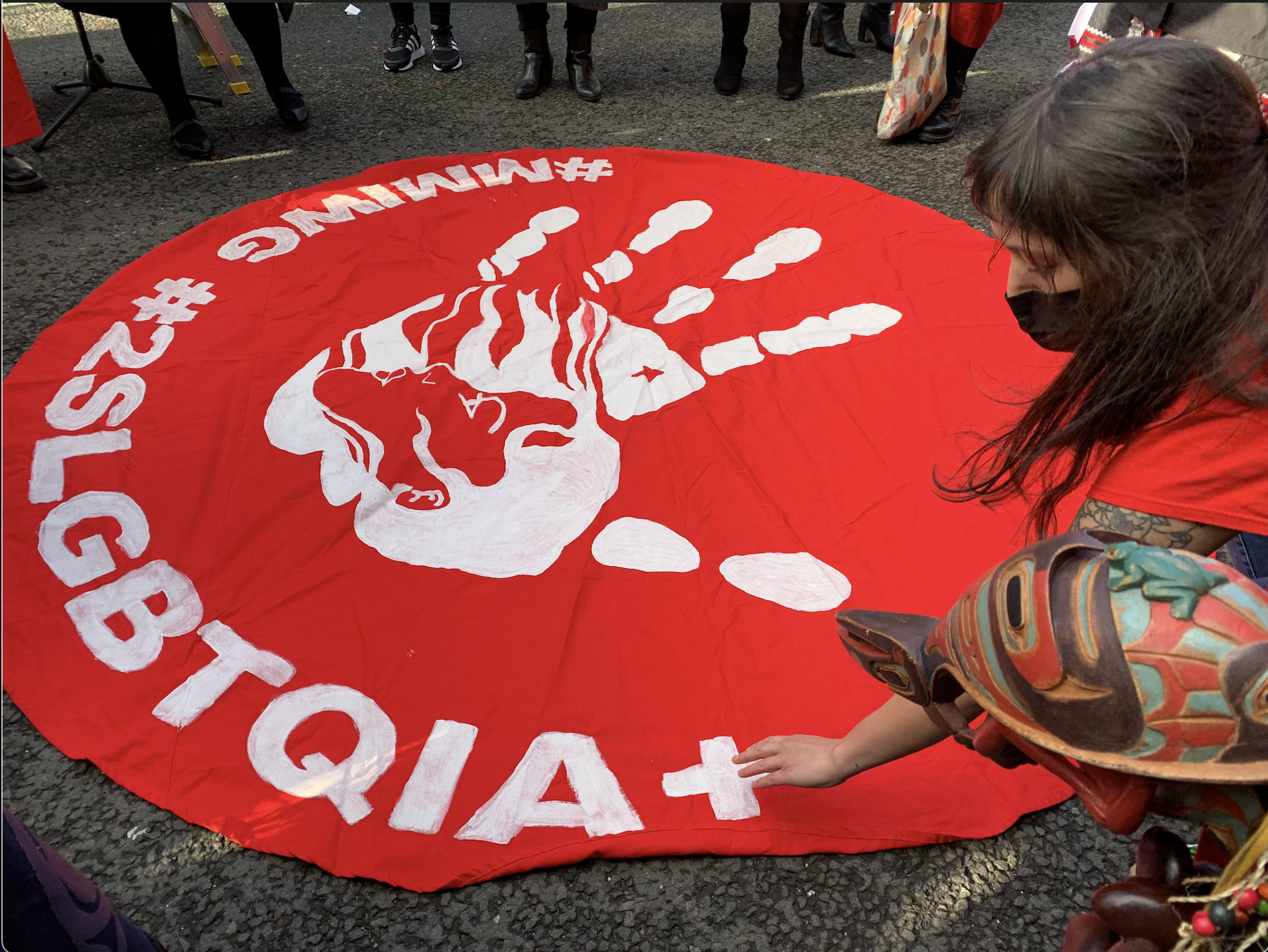 Circular banner displaying a handprint, a common symbol for the MMIWG2S movement. The banner was carried out with the marchers and placed on the ground to create space for keeping the area in front of the platform open, and to give the audience a clearer view of the speakers during the rally. (Photo/Leala Pourier)
Circular banner displaying a handprint, a common symbol for the MMIWG2S movement. The banner was carried out with the marchers and placed on the ground to create space for keeping the area in front of the platform open, and to give the audience a clearer view of the speakers during the rally. (Photo/Leala Pourier)
 Two young First Nations women talking prior to the rally. The color red is often used in the imagery and messaging of MMIWG2S. (Photo/Leala Pourier)
Two young First Nations women talking prior to the rally. The color red is often used in the imagery and messaging of MMIWG2S. (Photo/Leala Pourier)
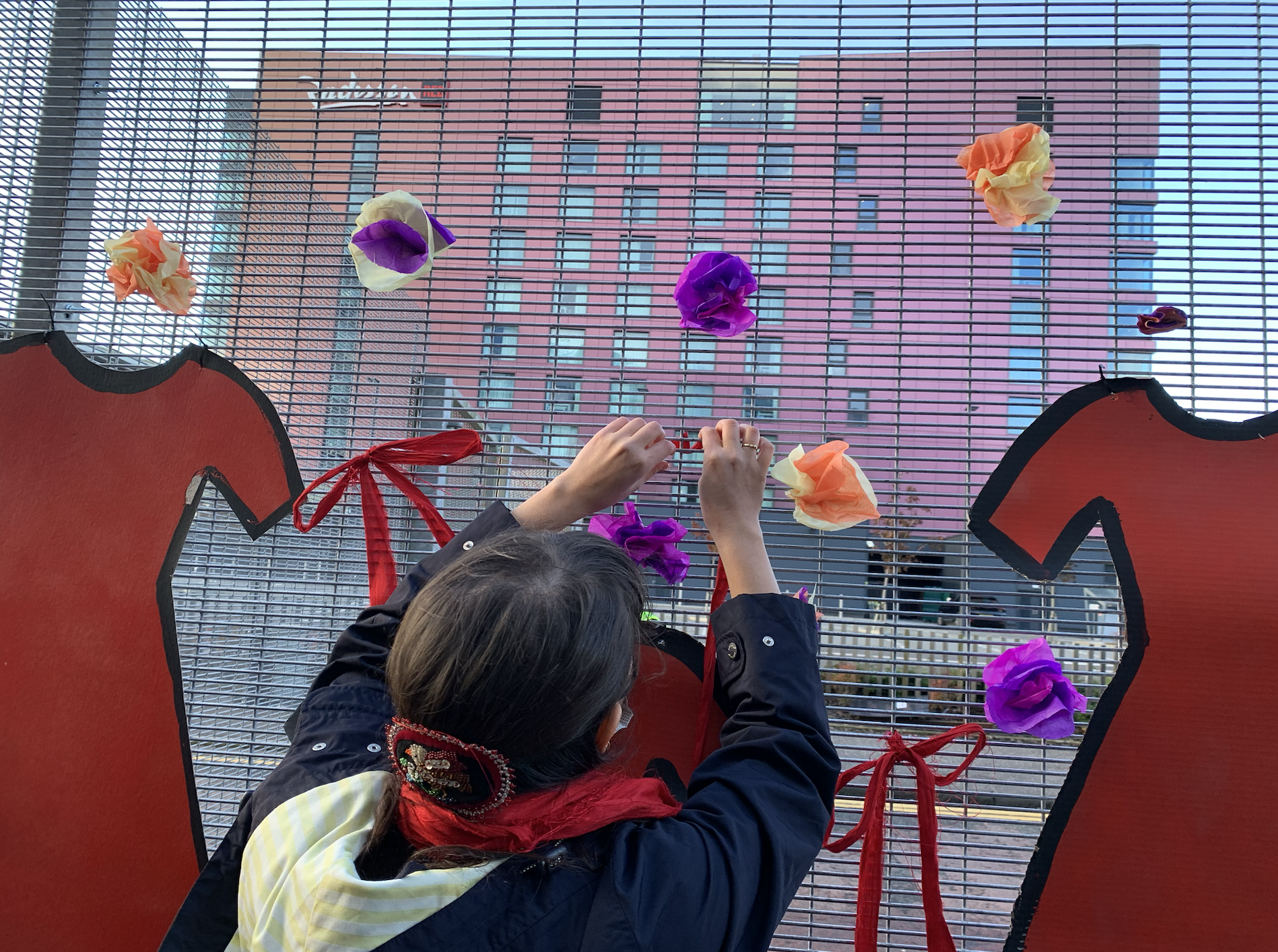
Indigenous woman tying red fabric to the fence, creating an impromptu memorial for all the missing and murdered Indigenous women and girls. (Photo/Leala Pourier)
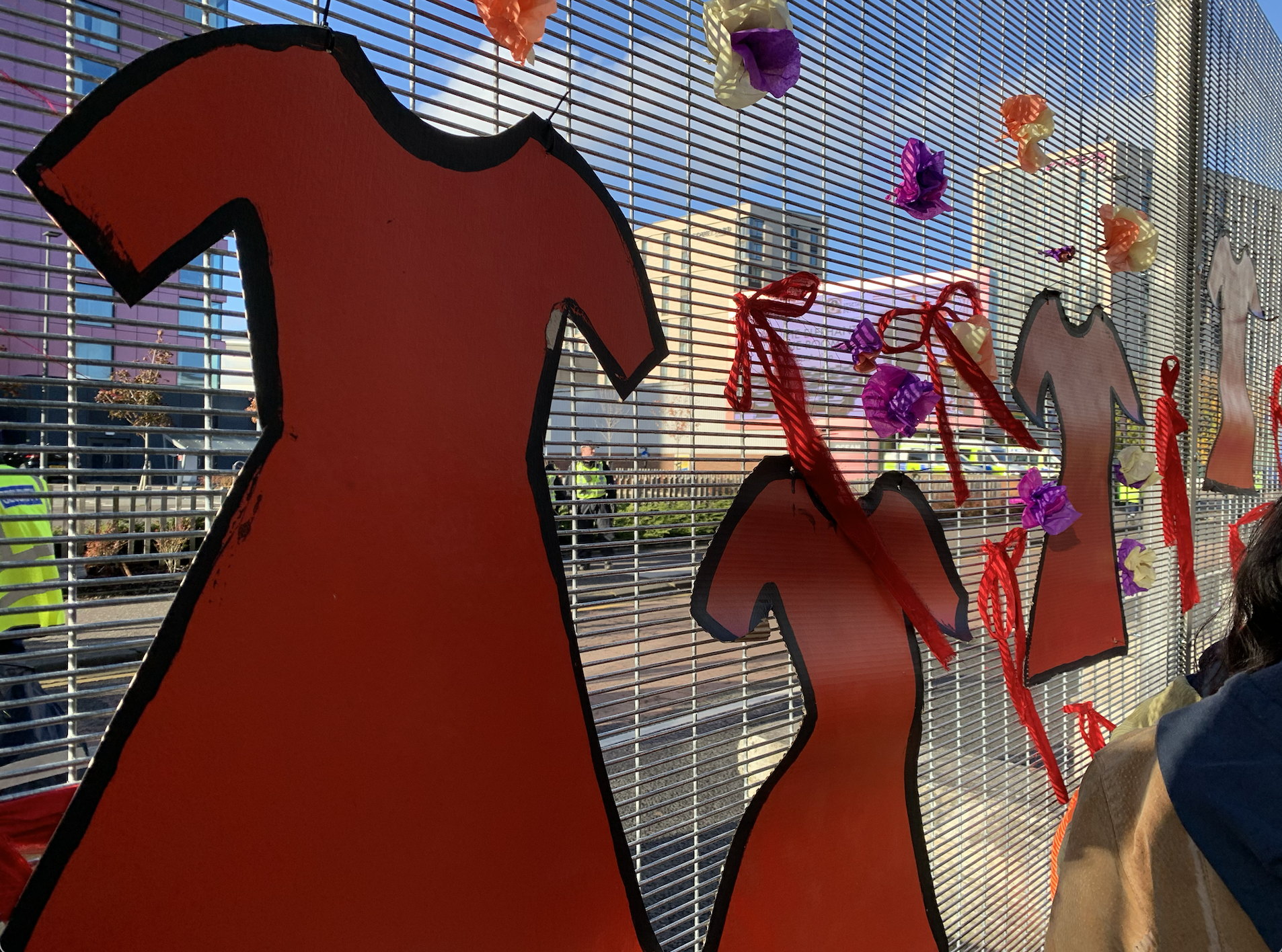 Temporary memorial on the barrier fence of the Blue Zone for all the missing and murdered Indigenous women, girls and two spirit individuals. (Photo/Leala Pourier)
Temporary memorial on the barrier fence of the Blue Zone for all the missing and murdered Indigenous women, girls and two spirit individuals. (Photo/Leala Pourier)
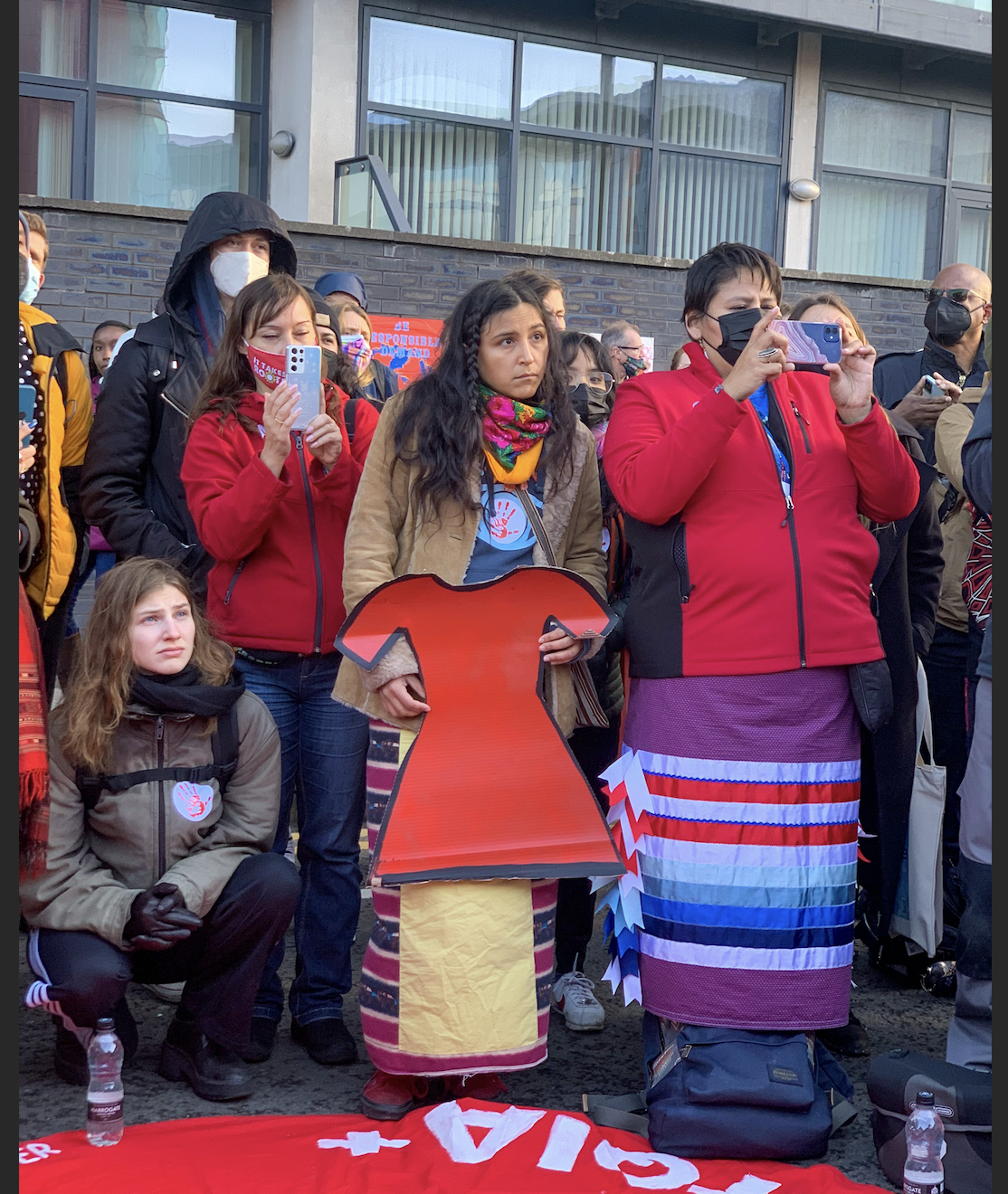 Crowd reacting to a speech on the impact of oil drilling on Indigenous communities. (Photo/Leala Pourier)
Crowd reacting to a speech on the impact of oil drilling on Indigenous communities. (Photo/Leala Pourier)
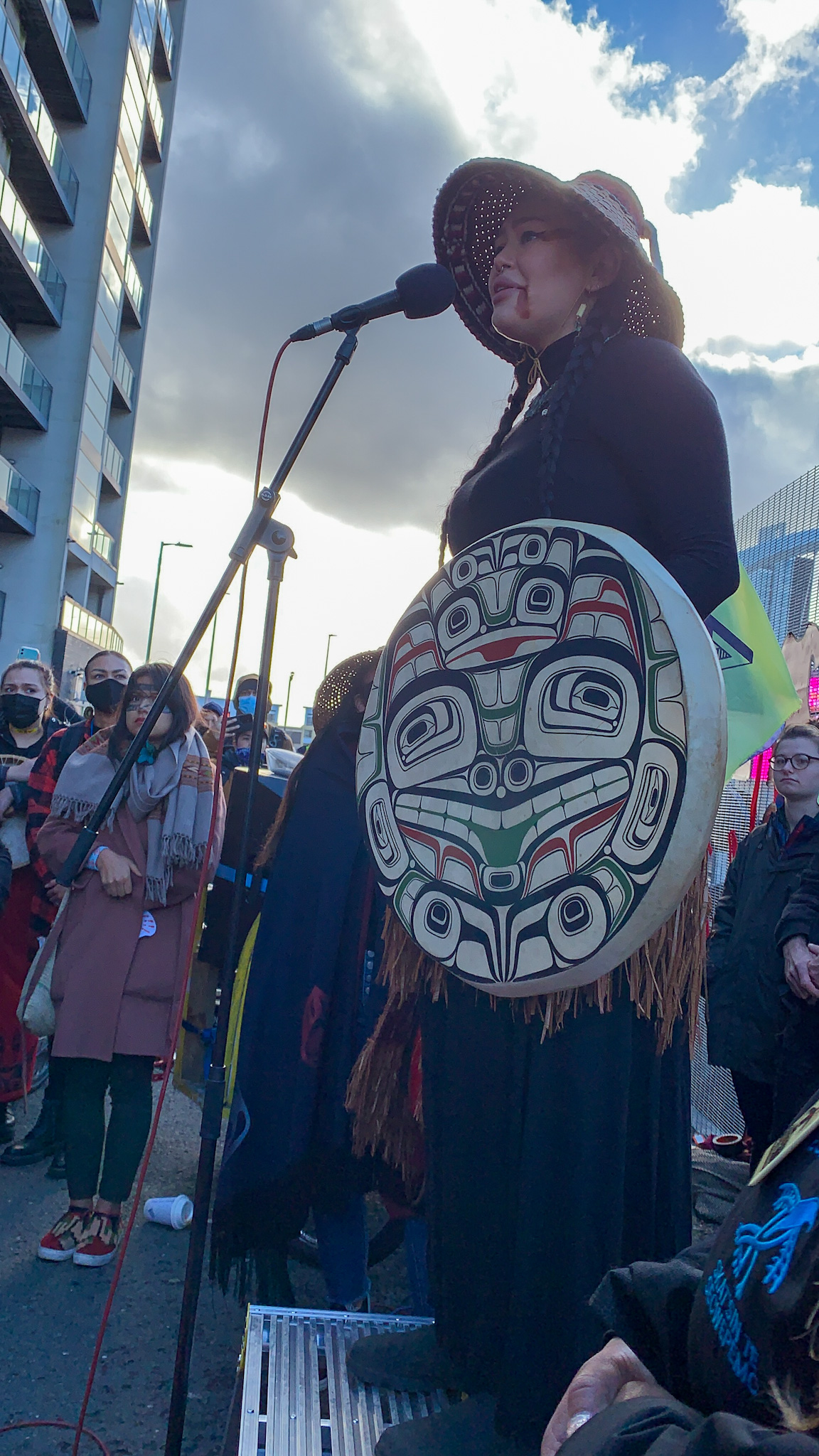
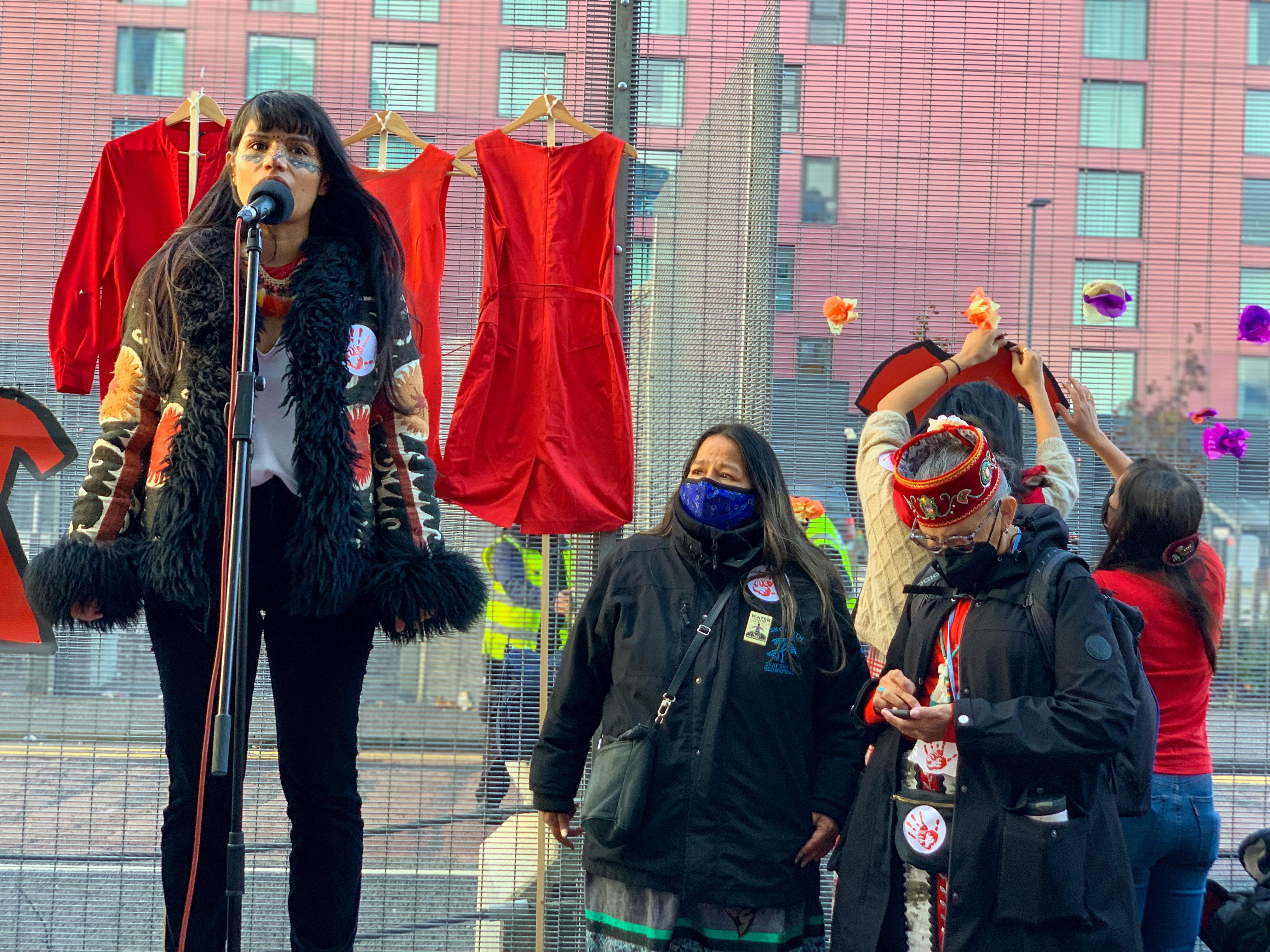
Leala Pourier (Oglala Lakota) is a youth activist and college student.
More Stories Like This
Native News Weekly (August 25, 2024): D.C. BriefsUS Presidents in Their Own Words Concerning American Indians
Native News Weekly (December 14, 2025): D.C. Briefs
Wounded Knee Massacre Site Protection Bill Passes Congress
Two Murdered on Colville Indian Reservation
Help us defend tribal sovereignty.
At Native News Online, our mission is rooted in telling the stories that strengthen sovereignty and uplift Indigenous voices — not just at year’s end, but every single day.
Because of your generosity last year, we were able to keep our reporters on the ground in tribal communities, at national gatherings and in the halls of Congress — covering the issues that matter most to Indian Country: sovereignty, culture, education, health and economic opportunity.
That support sustained us through a tough year in 2025. Now, as we look to the year ahead, we need your help right now to ensure warrior journalism remains strong — reporting that defends tribal sovereignty, amplifies Native truth, and holds power accountable.
 The stakes couldn't be higher. Your support keeps Native voices heard, Native stories told and Native sovereignty defended.
The stakes couldn't be higher. Your support keeps Native voices heard, Native stories told and Native sovereignty defended.
Stand with Warrior Journalism today.
Levi Rickert (Potawatomi), Editor & Publisher
